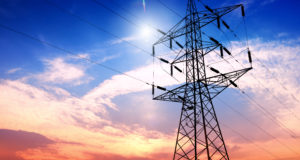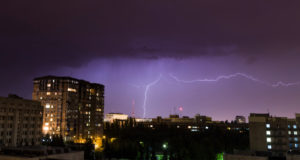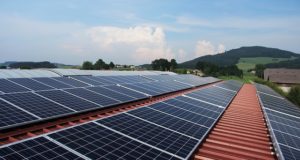
Using passive solar energy can save money on heating and cooling bills.
By utilizing passive solar energy, our ancestors could use temperate differences to heat and cool their homes. The sun rises in the east and sets in the west, right? And it is higher in the summer than in the winter. We know that. Thousands of years ago they knew that. By using the difference in the temperature between day and night, summer and winter, they could trap the sun’s energy to make their homes pleasant to live in. It was warm in the winter and cool in the summer.
In the temperate parts of the States, houses were built to have southern exposure. In the hot parts in the South, they had deep porches and large overhangs to provide shade during the hottest parts of the day. What they did was to live in harmony with the cycle of nature – they used the sun’s passive energy, with no technological devices whatsoever.
Gaining Popularity
Solar energy is rapidly gaining popularity among Americans, for various reasons. Of about 116 million homes in America, 200,000 are using some kind of a photovoltaic solar (PV) system, with about 10,000 using solar energy alone as their source of power. The prices are going down, the technology is becoming more available and affordable, and it is very attractive to people wishing to go off grid. But, PV solar systems mean high-level technology, require a great deal of knowledge for maintenance, and the initial cost is still relatively high.
Passive solar energy uses the knowledge of the local climate, the angle of the sun’s passage across the sky and the nature of materials used to build the home. By making the house the right shape, placing the windows right and positioning walls, windows and roofs in the right direction, one can cut the building’s energy costs by 30 to 40 percent with no additional cost.
The science behind passive solar energy
There are a few scientific facts that enable us to use the sun’s passive energy:
- Heat naturally travels from a warmer to cooler area until the temperature equalizes.
- Certain materials retain energy (heat) better than others. This is called thermal mass. Water, earth, rocks and bricks have the highest capacity to retain heat.
How to design a house to use passive solar energy
Although it is easiest to use passive solar energy if you are designing your house from scratch, you can make changes to your existing house in order to decrease your heating or cooling bills. In fact, most of the principles of designing a passive solar house make sense in building any house, as one uses the power of the sun to make living more pleasant and less expensive.
Although designing a house in order to minimize or completely eliminate use of fossil fuels for heating or cooling requires a lot of knowledge and planning, the basic principles behind a passive solar design are simple:
Orientation
If terrain allows, the longer axis of the house should be oriented east/west, so that most rooms face sunny south. Large tilted windows trap a maximum amount of the sun’s energy, which naturally gets transferred to the interior. In the summer, when the sun’s arc is much higher, these same rays will bounce off vertical panes of glass.
Prevailing winds should be allowed to pass through to help air circulation and equalization of the temperature. High ceilings allow hot air to travel upwards and naturally cool the space.
Planting evergreen trees on the north side of the house will protect the house from harsh winter winds. Also, leafy deciduous trees planted to the south will provide pleasant cooling shade in the summer. Once they shed their leaves in the winter, they allow the sun’s warmth to pass through.
Cut your electric bills in half with backup solar power
Shading
If you allow full sunlight to come through your large southern facing windows in the summer, you would be living in a boiler. Deep overhangs keep the summer high-passing sun from overheating your living space. However in the winter, when the sun is much lower, the overhang is not in the way. The same seasonal shading can be achieved with trellises covered by seasonal vines. Or perhaps, deciduous trees which shed their leaves in the winter. Shutters and curtains that keep the sun from overheating the living space in the summer can keep the temperature in the room almost 20 degrees lower.
Windows and patio doors
Windows are your solar collectors, so they should be located mostly on the southern side of the house. Limit the number and size of windows on other sides of the house. They should play an important role in air circulation. Keep in mind that your windows not only collect solar energy, but lose it too, so do not exaggerate in size. Thick drapes or shutters should keep the rooms from losing heat during the night. Double panes play the same role.
Insulation
A house in which every surface opened to the environment is well-insulated keeps the same pleasant temperature year round. Insulating materials, which do not conduct heat well, prevent heat loss in the winter or heat entrance in the summer. Keeping temperatures even is the key. Therefore you do not have to waste energy by raising or lowering temperatures to be comfortable.
Thermal mass
Thermal mass is a building material that collects and distributes solar energy. It is a solid or liquid material that absorbs and stores heat or coldness and releases it when it is needed. Other building principles are just common sense ways of building a house. Use of thermal mass really makes passive solar design unique.
Characteristics of some materials that store and distribute the sun’s energy well were known to our ancestors a long time ago. People were building houses in Mexico of adobe, or were covering roofs with sod in England, or were baking bricks all over the world, or were building castles with large stone cubes.
During the day and in the summer, the sun heats walls, roofs and floors made of a thermal mass, such as concrete, earth, brick or water. At night, or in the winter, when the temperature of the surrounding air drops, they release that stored heat because the inherent nature of the materials try to equalize the temperature with its surrounding.
In addition, solar panels can serve not only as photovoltaic collectors of the sun’s energy, but work in a passive way as thermal mass.
What are some of your tips on passive solar energy? Please share in the comments below.
 Off The Grid News Better Ideas For Off The Grid Living
Off The Grid News Better Ideas For Off The Grid Living



